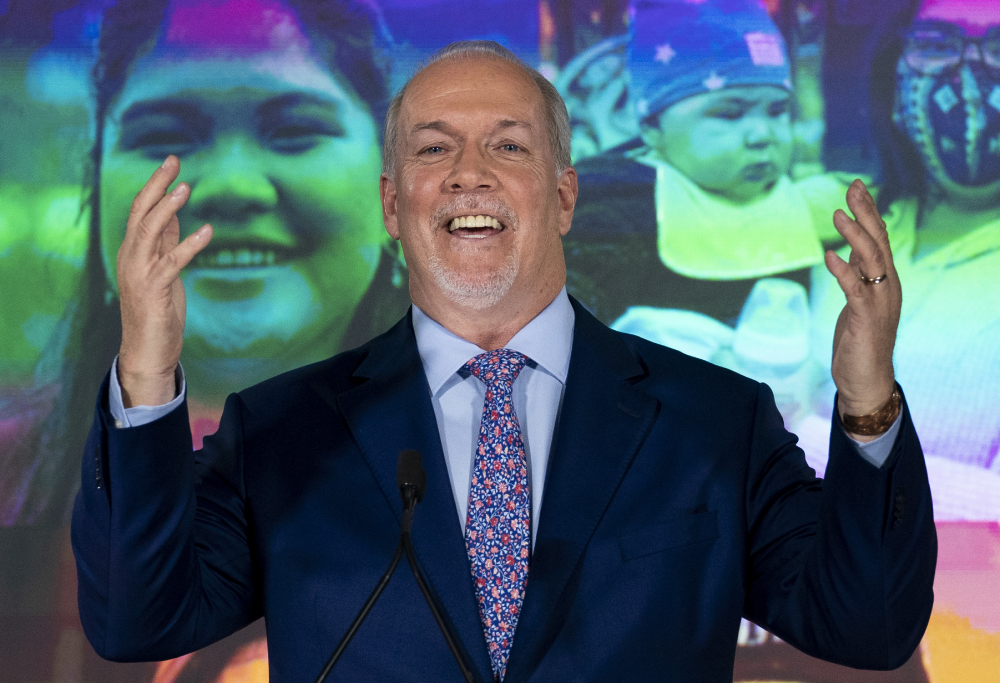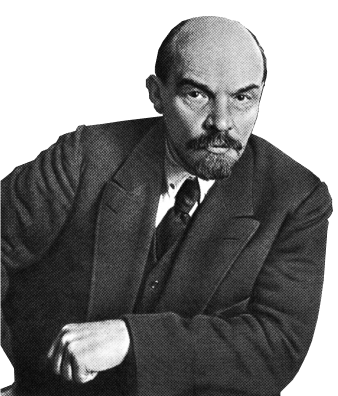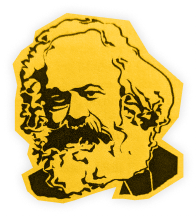
On Oct. 24, the B.C. NDP scored a crushing election victory, winning 55 out of 87 seats. The main loser was the corporate-backed B.C. Liberal Party who had their lowest share of the vote in nearly 30 years. However, the electoral success of the NDP, led by the moderate leadership of John Horgan, is only preparing for a bigger crisis in the future.
This vote was a clear gamble by Horgan who shocked many by calling an election in the middle of the second wave of the pandemic. The gamble, however, worked. With Horgan enjoying a “COVID bump” in support, the NDP confidently sailed to victory, making John Horgan the first two-term NDP premier in the history of the province.
The NDP platform contained a number of reforms which would put money into the pockets of working class people if implemented. The first obvious one is a recovery measure known as the family grant that will give $1,000 to each family making less than $125,000 per year and $500 to singles making less than $62,000 per year. In addition to this, the NDP promised $3 billion in investment to schools and hospitals as well as expanding $10 a day daycare to make it accessible for more families. To help people deal with the exorbitant rents, the NDP will be freezing rent until the end of the year and offering a $400 rent rebate for anyone making under $80,000.
The NDP win was helped along by the fact that the B.C. Liberals stumbled from one gaffe to the next, with B.C. Liberal MLAs making sexist and racist comments and party leader Andrew Wilkinson slow to do anything about it. People also remember the legacy of the B.C. Liberals who had ruled from 2001-2017, carrying out cuts and privatizations, giving gifts to big business and attacking the labour movement. Clearly, having the B.C. Liberals shut out of power once again is a welcome development for many working class people in B.C..
The NDP also managed to hold off the Green Party which had experienced a mini-surge during the 2017 election, going from eight per cent of the vote and one seat in 2013 to 17 per cent and three seats—effectively making them king maker for the NDP-Green coalition government. The Green Party under Andrew Weaver used this position to act as right-wing pressure on the NDP, resisting measures which would have made it easier for workers to unionize.
However, Weaver quit as Green leader earlier this year, opening up somewhat more contradictory dynamics within the Green Party. New leader Sonia Furstenau seems to be a step to the left. Furstenau had clashed with Weaver on Twitter over her proposal for a 4-day work week, which Weaver called “an absolutely kooky idea.” Under Furstenau, there were many more noticeable leftwing candidates, such as Jenn Neilson in Victoria, who is more in line with the eco-socialist movement. While this wasn’t a significant enough leftward shift to eat into the NDP surge, it did allow the Green Party to maintain a similar percentage of the vote, declining from around 17 per cent in 2017 to 15 per cent this election. The party also managed to hold onto 3 seats.
A moderate NDP cannot solve the crisis
While many in NDP and labour circles are celebrating, they would be unwise to rest on their laurels. Anyone who remembers the 1990s will recall how the NDP brass responded when met with the demands of workers, youth, Indigenous people, and environmentalists. Mike Harcourt, NDP premier in the early 90s, bent to corporate pressure and backtracked on welfare increases. Instead Harcourt went after what he described as supposed “cheats, deadbeats and varmints” conducting welfare fraud. Harcourt’s “B.C. Benefits” welfare reform increased homelessness in B.C. from 11,000 to 27,000 in the space of 18 months.
Similarly, Harcourt bent to pressure from logging companies and opened up Clayoquot Sound’s ancient temperate rainforest to industrial logging. This led to the largest act of civil disobedience in Canadian history with 860 of the more than 12,000 protesters being arrested, tried and jailed. It was only under mass pressure that the NDP government eventually implemented a protection plan for forests, working with Indigenous peoples.
Harcourt’s successor, Glen Clark, who ruled from 1996-1999 was little better and continued the same welfare reform program, mirroring Conservative premiers in Alberta and Ontario. When the NDP convention denounced this welfare reform Clark responded by saying, “No. We have a deficit.” The next B.C. NDP premier, Ujjal Dosanjh, was cut from the same cloth. After leading the party to the most lopsided defeat in the history of the province in 2001 he quit the NDP to become a federal Liberal cabinet minister under Paul Martin. Harcourt also joined the federal Liberals as an advisor to the Martin government.
It is therefore not surprising that the B.C. Liberals crushed the NDP in 2001, reducing the party to just 2 seats. The betrayals of the B.C. NDP leadership severely hampered resistance to the onslaught of the Gordon Campbell B.C. Liberals, who took out the hatchet and attacked the labour movement.
During the 2000s, poll after poll would demonstrate that B.C. Liberal leaders were in fact some of the most hated premiers in the history of the province, but somehow the B.C. NDP would always manage to snatch defeat from the jaws of victory. The B.C. Liberals would win election after election, not because they were popular, but because the NDP could not convince enough people that they would govern much differently—and based on experience, could we really blame them?
These betrayals were not the result of some innate personal flaw of Harcourt, Clark and Dosanjh but the logical conclusion of the acceptance of the capitalist system and the abandonment of the fight for socialism. None of these betrayals should have been surprising as Harcourt was already making overtures to the capitalists before taking power, telling the Vancouver Board of Trade in 1989 that “the NDP no longer believes in the redistribution of wealth.”
The fact of the matter is that the B.C. NDP bureaucracy has not fundamentally changed since these days. We have gotten a taste for what side Horgan will take during the conflict between the Wet’suwet’en and the Coastal GasLink pipeline development. Horgan refused to meet the hereditary chiefs, stating that “There is no negotiating to be done.” This was while the Supreme Court of B.C. granted an injunction against Indigenous land defenders, leading to the RCMP intervening to arrest and remove those upholding the blockades. When the movement erupted into protests outside the B.C. legislature, Horgan denounced the protests, stating “If that’s winning, I don’t want any part of it.” Hypocritically, this all occurred after the Horgan government adopted the United Nations Declaration on the Rights of Indigenous Peoples as law, showing how empty that gesture was.
Crisis on the horizon
Faced with the economic crisis triggered by the COVID-19 pandemic, all of the economic wiggle room that the NDP government has enjoyed so far has evaporated. The government is now predicting a 2020-21 deficit of $12.8 billion. This is due to the real annual GDP for the province declining by 6.7 per cent for 2020 leading to $4.6 billion less government revenue and $7.7 billion more in spending.
While the public finances of the B.C. government are relatively healthy compared with other provinces, it would be wishful thinking to predict a big economic bounce-back with large surpluses. With the federal government placing the capitalist system on life support, the full effects of the economic downturn have yet to be felt. The B.C. economy already was only eking out sub-two per cent growth rates, keeping itself afloat with a sustained real estate bubble largely based on speculation. As government measures propping up the economy are withdrawn, this could leave hundreds of thousands in B.C. struggling to pay the bills as they face the deferral cliff.
While borrowing rates are currently low, this won’t last forever and these massive debts will have to be paid back with interest. The capitalists will resist at all costs any attempt to make them pay and the Horgan NDP government will tend to bend to corporate pressure. The $7 billion in promises that the Horgan government has made could easily evaporate like beads of water on a hot stove. This means that the workers’ movement must be prepared to exercise much greater pressure and resist any attempts of the government to offload the burden of the crisis onto working class people.
Revive militant socialist traditions in B.C.
The Labour movement in B.C. has quite often been the vanguard of the workers movement in Canada. From the early days of the Socialist Party, to revolutionary labour martyr Ginger Goodwin, to the Vancouver general strike, to Operation Solidarity, and the more recent anti-Campbell movement of the 2000s, working class people in B.C. have a rich militant tradition of working class resistance.
In conditions of economic crisis, there is no third way between capitalism and socialism. In fact, every NDP government in power during a crisis has proven this. From Harcourt, to Rae, to Dexter, to Notley—“realistic” NDP leaders chose to bow to corporate pressure and sell out the working class. There is no reason to believe that Horgan would act any differently.
What is needed more than ever is to revive the fight for socialism in British Columbia.
In the words of Labour martyr Ginger Goodwin:
All I know is this, that in every phase of society, whenever a change took place, it was the outcome of force which determined the winning side, so what we want is to educate you to your power, Mr Workingman, and when we realize it we have the power and the lever to overthrow the existing society.
Join us, to help us revive this tradition in B.C.!

